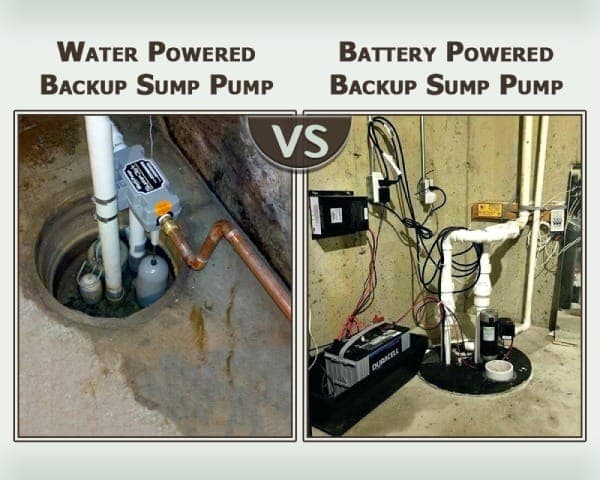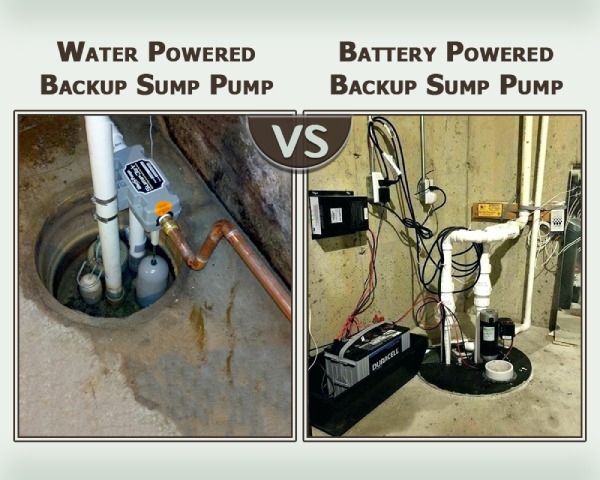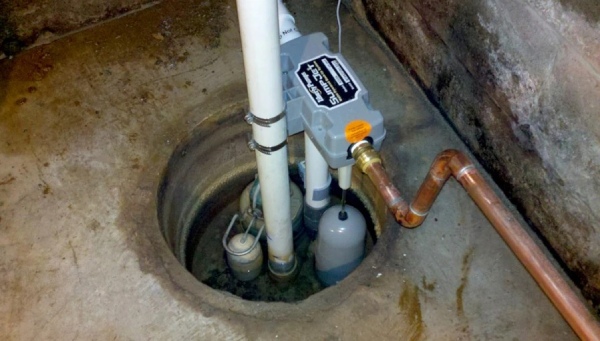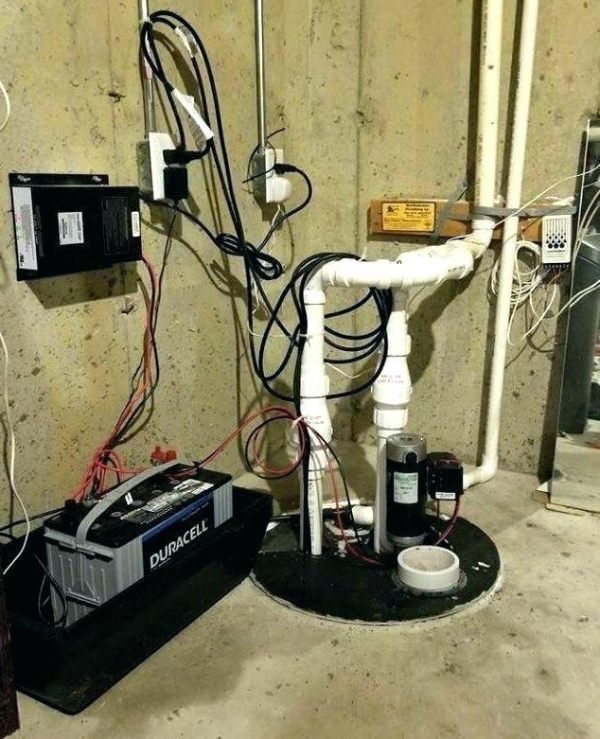
A flooded basement is a nightmare for any homeowner. Water that collects in a basement may originate from several possible sources. According to the American Society of Home Inspector, more than 60% of people experience water flooding or moisture in the basement. Apart from the damage that can be caused by the stagnant water in basement which can further lead to serious damage to your home foundation; basement moisture can also lead to mold and potential health problems. Severely flooded basements can also result in damage to other appliances and items in storage. And for that, the simplest solution is to install a sump pump. It is essential to have a sump pump in your basement. If your home is located in an area that is susceptible to excessive rainfall, a sump pump would be a smart investment. A sump pump is thus, a valuable tool for homeowners.
What is Sump Pump?
A sump pump is essentially a piece of pumping equipment used to help preventing flooding in buildings that have basements. Sump pump protects your basement from heavy rains and rising waters that increases repair costs and structural damages. But sometimes the power goes off due to flooding or even the main pump does not function or its capacity might prove insufficient. So, should you risk all your valuable property or shall you invest a few hundred more in a backup sump pump which will work when the power fails or when the main pump somehow doesn’t function or if output is less! Ofcourse, it will save you from damages. It moves out water from your basement.
The dictionary meaning of the word ‘sump’ is any space that can contain a liquid. A sump is a naturally constructed pit, usually a hole carved below the main surface of your basement floor. This pit is known as a basin which holds the sump pump. The pump is equipped with valves that sense escalating water levels or pressure. When the water gets too high, sump pumps automatically pumps out excess water from the basement, discharging it from your property using a discharge line. The main purpose of sump pump is to disperse the effluent when your house has a high water level or if conditions for drainage are not favourable.
Most homeowners understand that they have a Primary Sump Pump (a main pump that runs on electricity) in their basement to protect them from flooding. When the main sump is not working, a backup sump pump is used to protect your basement from flooding. Having a backup sump pump will ensure safety by keeping the basement clean and dry always. The reason why you need a backup sump pump is because; you can remove the water in non- conducive weather condition and even while there are power shortages or power failures.

At home, you need dry conditions because it helps in improving your indoor air quality through reduction of mold, moisture, and mildew buildup. Thus, sump pump has a role to play here. While it has a good role to play, the backup sump pump will need water or power to operate it.There are various types of sump pumps available in the market. So, you need to refer sump pump guide before you buy them. Nowadays, water powered and battery backup sump pumps are more popular. So, it is essential to know the difference between them before buying.
Water Powered vs Battery Powered Backup Sump Pump
Any machinery or equipment comes with some advantages as well as some disadvantages. Sump pump is no different. The decision of selection is driven by lot of factors that needs to be taken into consideration i.e. specific plumbing system setup, your water volume needs, and other preferences. To get the right one for your home, consider the following attributes and go for the one that suits the best.
01. Water Powered Backup Pump
Currently, this water powered type sump pump is gaining more popularity. Water powered sump pumps can help during emergency situations when you lose power. Even under the heaviest rainfall and worst storm conditions, a water powered sump pump is a solid defense against flood damage in your home. Most of the people prefer to use this type of sump pumps as their backup in the house. It runs on basic principle: Run water through a pipe at high speed to generate suction, which then empties your sump pit. In other words, the suction that is generated pulls the sump water into a chamber where it is mixed with the municipal water and then discharged outdoors.

For the water powered backup sump pump to operate, it needs to draw underground water and use that high pressure getting it through the system after the power goes OFF. This type of sump pumps works together with your main supply sump pump such that it will provide the power when there are emergencies.When installing water powered sump pump, it should be at indoor or outdoor systems because it will help to pump the water from your basement when required. Besides, this type of sump pump also consists of additional switch that will kick due to high pressure forcing external water to pass through the pipeline.
If you want to set it, ensure it is at high elevation over your main pump. If the water powered pump will be activated, the outside water supply will surge through the cavity that is at the higher level of the sump pit. When the water will flow through the channel, the water will create vacuum-style action drawing the water from the sump pit to deposit outside.
When the pressure is building up, the float rises to a higher level and ensures triggering the backup sump pump into action. Later, the water starts draining from the sump pit.
Advantages:
- If you have this type of water sump pump, it will save your time and energy of the monitoring battery, especially on power outages.
- Using this type of backup sump pump also helps in saving for replacements, repairs, and maintenances over the time.
- In areas where a pressurized municipal water supply is available (city water), a water-powered backup sump pump can be a reliable backup sump system without the need for a battery power supply.
Disadvantages:
- Uses about 2 gallons (7.6 litres) of pressurized fresh water to pump out 1 gallon (3.8 litres) of sump water. Water usage will show up on the water bill.
- A general concern is, clean and drinkable water is being wasted to get rid of dirty sump water.
- It is more expensive than battery backup sump pump due to installation cost of reduce pressure valve and water piping.
- If the float gets stuck in the on position, it will result in a large water bill.
02. Battery-Powered Backup Sump Pump

A sump pump that works on a battery is battery powered sump pump. Nothing like it if you go for a battery powered sump pump. When you have a regular sump pump along with this battery-powered pump, it will help in removing the excess water in the sump pit and put into an external discharge pipeline. To keep the battery fully charged and ready to use, it is plugged into the household electrical outlet. An alarm will sound if the power is out, the pump is running, the battery is not fully charged, or it’s low on voltage.
Advantages:
- It provides power after malfunctioning of the main sump pump during flooding.
- The installation process is simple.
- Unlike water powered pump, battery backup works when there is no water supply.
- This type of sump pump kicks in to run until the main pump problem is fixed.
- During severe flooding such that main sump pump can’t handle all water volume, the battery backup pump will help to drain fast.
Disadvantages:
- It has a limited battery life, generally 7-24 hours of pump operation.
- According to the City of Ann Arbor’s, the batteries that this pump runs on must be replaced every 3-5 years.
- Battery may run down before the power comes back.
- Battery water levels must be checked regularly.
Final Words:
Emergencies never ask and come! Having any sump pump for your backup is useful for emergencies. If there is no power to help main sump pump work, the backup pump will quickly remove the excess water from the basement.
An investment that yields you more than its cost, is a smart investment. Sump pump is one such investment. Thus, sump pumps are a very important appliance in your home. So, choose the best backup sump pump that matches your requirement and suits your budget.
Also Read:
What are the Different Types of Traps in Plumbing?
What is a Reflux Valve or Check Valve?
































